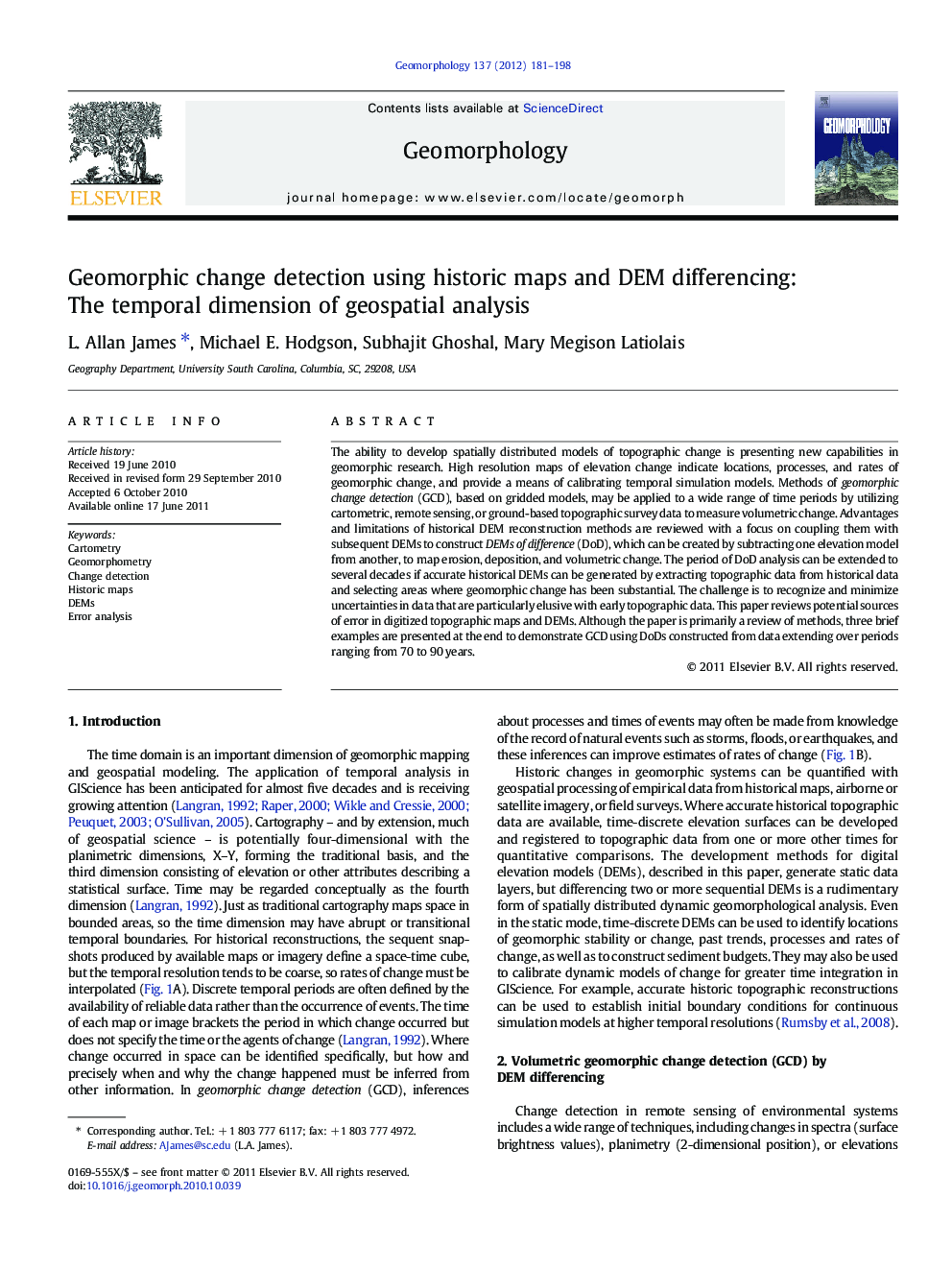| Article ID | Journal | Published Year | Pages | File Type |
|---|---|---|---|---|
| 4685505 | Geomorphology | 2012 | 18 Pages |
The ability to develop spatially distributed models of topographic change is presenting new capabilities in geomorphic research. High resolution maps of elevation change indicate locations, processes, and rates of geomorphic change, and provide a means of calibrating temporal simulation models. Methods of geomorphic change detection (GCD), based on gridded models, may be applied to a wide range of time periods by utilizing cartometric, remote sensing, or ground-based topographic survey data to measure volumetric change. Advantages and limitations of historical DEM reconstruction methods are reviewed with a focus on coupling them with subsequent DEMs to construct DEMs of difference (DoD), which can be created by subtracting one elevation model from another, to map erosion, deposition, and volumetric change. The period of DoD analysis can be extended to several decades if accurate historical DEMs can be generated by extracting topographic data from historical data and selecting areas where geomorphic change has been substantial. The challenge is to recognize and minimize uncertainties in data that are particularly elusive with early topographic data. This paper reviews potential sources of error in digitized topographic maps and DEMs. Although the paper is primarily a review of methods, three brief examples are presented at the end to demonstrate GCD using DoDs constructed from data extending over periods ranging from 70 to 90 years.
